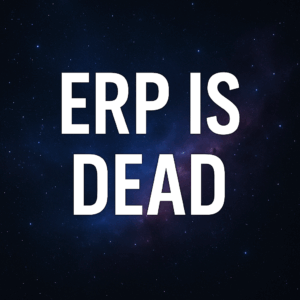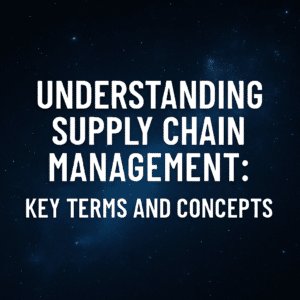Industry analysts and academics often tout the concept of digital disruption as a good thing. But the reality is that while technology has the ability to positively transform your business, it is more likely to create operational disruption of the negative kind.
Table of Contents
ToggleDigital disruption vs. operational disruption
For example, while many companies look to disruptive technologies such as artificial intelligence and internet of things to help shape and future-proof their businesses, most still have trouble implementing the most basic ERP functionality. Instead of transforming their businesses for the better, many companies are unable to ship product or close the books at the time of go-live.
The good news is that operational disruption can be avoided. The key is to understand the key decisions that need to be made before embarking on your transformation. There is no one-size fits all answer, so it is important to define what digital disruption means to you, how much risk you want to take on, and how quickly you realistically want your organization to change.
What exactly is digital disruption?
Digital disruption is generally defined as technology that can transform a business. In some cases, digital disruption is a defensive move meant to keep up with the competition (retailers that must compete with Amazon, for example). In other cases, digital disruption can refer to more opportunistic ways of building core competencies to move ahead of your competition.
In many cases, digital disruption is something that happens to companies and can’t be avoided. But for most organizations and industries, digital transformation is an opportunity to incrementally improve an existing business model, increase efficiency, or optimize the customer experience. While digital disruption can’t be ignored, it also isn’t a life or death situation for most – at least not yet.

How real is the risk of operational disruption?
According to research from our 2019 Digital Transformation and ERP Report – along with other research my team and I have conducted over the last 14 years – companies have a 50% chance of experiencing some sort of operational disruption at the time of their ERP go-live. The most common examples are being unable to ship product or an inability to close the books.
This number has not changed much over the years of our research. Despite quantum-leap advances in enterprise technology, companies still struggle with the most basic components of technology adoption. This is hardly the digital disruption that most of us have in mind when embarking on a digital transformation.
Steps to mitigate the risk of operational disruption in our journey to digital disruption
There are plenty of risks when embarking on the journey from your current state of legacy systems to the future state of digital disruption. Yet academics, industry analysts, and other ivory tower types without much relevant hands-on implementation experience fail to mention this important fact.
Note: this is most likely due to the fact that industry analysts are largely supported by the ERP software vendors that have the most to gain from coercing their customers into “digital disruption.” Most buyers of new enterprise technologies with grand visions of technology improvements aren’t aware of the 50% operational disruption rate.
Here are the steps companies can take to mitigate the risks of the transition from current state spreadsheets, manual processes, and legacy systems to a utopic future state of transformative new technology:
- Define how far we can realistically expect to push the organization on the digital disruption spectrum. Digital disruption is not a binary decision. It is not an either/or proposition. Instead, we need to define where on the change spectrum we want to fall. Every company is different. Some are more capable of making more drastic changes, while others will benefit from taking a more measured and incremental approach. Where we fall on this spectrum will largely be driven by the effectiveness of your organizational change management strategy.
- Define how quickly we want to move to that point on the digital disruption spectrum. If you are in the retail industry, you may have no choice but to embrace digital disruption – and to do so quickly. It may be a matter of survival. But for many organizations and industries, the risk of operational disruption is greater than the need to fully embrace digital disruption in a short period.
- Understand the time, cost, and risk of the above decisions – and invest accordingly. Your answers to steps #1 and #2 will determine how much time, cost, and risk will be required. Unfortunately, it is in software vendors’ best interests to understate and downplay these factors, which is how so many companies get into trouble. It is important to enlist unbiased and independent ERP consultants when determining your plan.
- Ensure that the above decisions are aligned with your risk tolerance. Finally, you will want to make sure that your executives, digital transformation team, and other key stakeholders are all aligned on their desired risk tolerance. They will also want to make sure that the answers to the above steps are in sync with that risk tolerance.
Bottom line: digital disruption doesn’t need to be extreme or dangerous
Haphazard industry and analyst advice will tell you to disrupt or die. We are here to tell you that it’s not quite that simple, and you certainly shouldn’t throw your entire organization into harm’s way in the name of digital disruption.
We are also here to tell you that you don’t have to step on the landmines in your journey to digital disruption. Independent, pragmatic, and technology-agnostic counsel will serve you well in defining the best digital strategy for your organization.
Feel free to contact me if you are looking for help determining how digital disruption fits into your business. I am happy to be an independent and technology-agnostic sounding board as you begin or continue your transformation journey!





